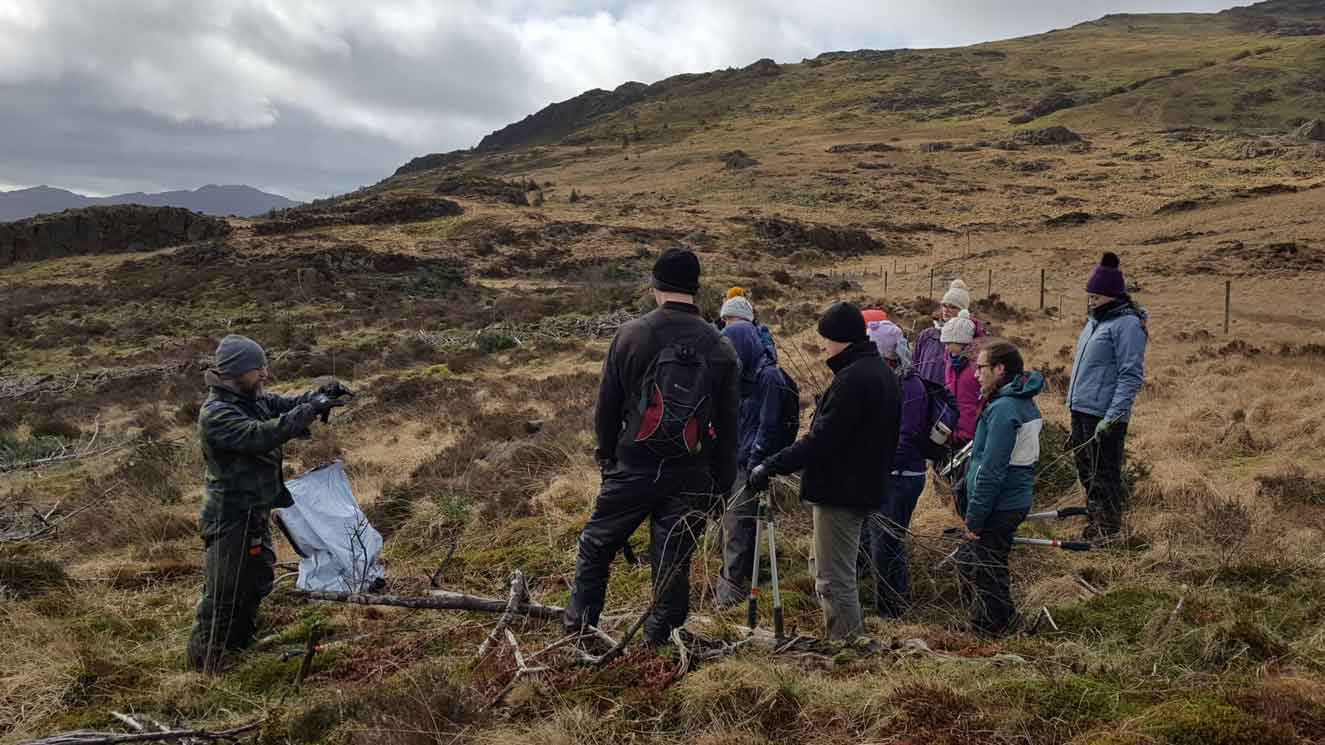We caught up with Professor Dominick Spracklen of Biosphere-Atmosphere Interactions, University of Leeds to discuss the carbon sequestration potential of Scottish native woodland.
You’ve been looking into the carbon sequestration potential of Scottish native woodland. Can you tell us about your findings?
We wanted to know how much carbon could be removed and stored if native woodland was allowed to expand across the Scottish uplands. We used a model that accounts for soil type and climate conditions to predict where native woodland could potentially establish. We combined this with information on the carbon storage of native woodland to estimate the potential for large-scale woodland expansion. We found that native woodland could expand to cover an additional 3.9 million hectares of the Scottish uplands and remove almost 7 million tonnes of carbon dioxide per year, equivalent to 17% of Scotland’s total carbon dioxide emissions. You can read more about our work here.
Your study particularly focused on the potential of naturally regenerated woodland? How would you define natural regeneration?
Natural regeneration is the process by which trees develop from seeds that fall and germinate naturally, without the need for tree planting. There is growing interest in natural regeneration and new woodland creation grants include natural regeneration for the first time.
At the Future Forest Company, much of our current land is degraded agricultural land where we can’t rely on natural regeneration alone, as the soil seedbank is too depleted. So right now we’re finding the balance between planting quite a high proportion of the land, but leaving areas to naturally regenerate wherever we can. Are you aware of any other possible limiting factors of natural regeneration?
Grazing pressure is another major constraint to natural regeneration across much of the UK. In much of the Welsh and English uplands, grazing of sheep prevents natural regeneration. Deer are an important part of UK’s wildlife. But when there are too many deer they can also impact vegetation and eat tree saplings preventing new woodlands from establishing. In many parts of the UK and particularly in Scotland, deer numbers are too high for natural regeneration to occur. Expensive fencing is required to exclude deer and allow trees to grow. In other parts of the UK, regular burning of heather prevents woodlands from establishing.

Are there issues around the timescale of natural regeneration? Do we have enough time to allow carbon sequestration to occur naturally?
Natural regeneration can occur very quickly if the conditions are right including a local seed source and suitable livestock and deer numbers. Our work conducted at Forestry England’s Hardknott Forest has shown that over 1000 new trees per hectare can establish within a few years through natural regeneration. Natural regeneration also avoids the ground disturbance that occurs during tree planting, which can release carbon stored in the soil. So in some circumstances natural regeneration could sequester carbon as fast, or faster, than could be achieved by tree planting. However, natural regeneration won’t be possible everywhere. As always the local conditions need to be assessed and accounted for.
A crucial benefit of natural regeneration is the scale of the new woodlands that could be created – if we get conditions right. The new woodlands re-establishing up the hillsides at Glen Feshie in the Cairngorms provide an encouraging hint of what is possible.

What would your vision for the future of Scottish native woodland be?
The climate emergency and the biodiversity crisis means a new approach to woodland creation is urgently needed. Native woodlands only cover 4% of Scotland and many native woodlands are small, fragmented and in poor condition. We urgently need to find room for more native woodland across Scotland and the UK. The Future Forest Company’s ambitious plans to create large new native woodlands across the UK to help mitigate climate change and restore biodiversity are exactly what we need to realise this vision.




